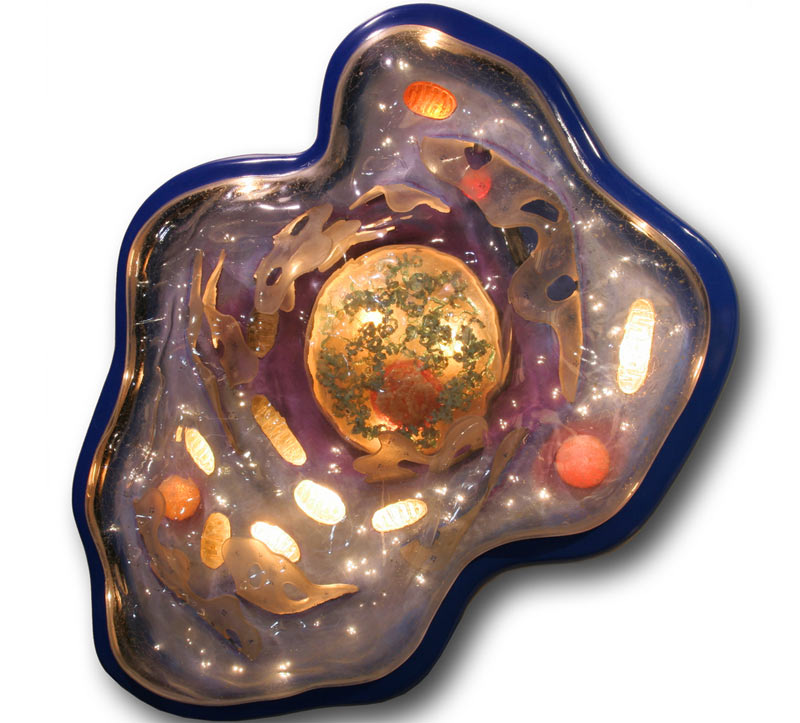Ancestor of All Living Things More Sophisticated than Thought

The mysterious common ancestor of all life on Earth may have been more complex than before thought — a sophisticated organism with an intricate structure, scientists now suggest.
The last universal common ancestor, or LUCA, is what researchers call the forerunner of all living things. Much about LUCA remains enigmatic — many think it was little more than a primitive assemblage of molecular parts, a chemical soup from which evolution gradually built more complex forms. Some even debate whether it was even a cell. [Theories on Earth's First Life]
Now, after years of research into a once-neglected feature of microbes, scientists suggest the last universal common ancestor was indeed complex, and recognizable as a cell.
Miniature organs
The researchers focused on a region of cells loaded with high concentrations of polyphosphates, molecules such as ATP used to transfer energy around the cell in chemical form. This storage site for polyphosphates may represent the first known universal organelle — compartments within cells that essentially act as miniature organs — the investigators suggest. Other kinds of organelles include the chloroplast, which gives plants the ability to use sunlight as energy, and the mitochondrion, which allows life to use oxygen for respiration.
Scientists had thought organelles were absent from bacteria and their distantly related microbial cousins, the archaea. Now these findings suggest this polyphosphate storage organelle is present in all three domains of life — bacteria, archaea and the eukaryotes, which include animals, plants and fungi.
"It was a dogma of microbiology that organelles weren't present in bacteria," said researcher Manfredo Seufferheld, a stress physiologist and cell biologist at the University of Illinois at Urbana-Champaign. Still, earlier research of his and his colleagues' showed that the polyphosphate storage structure in at least two bacterial species was physically, chemically and functionally the same as an organelle called an acidocalcisome found in many single-celled eukaryotes.
Get the world’s most fascinating discoveries delivered straight to your inbox.
To look for this storage unit, in their latest research the team analyzed the evolutionary history an enzyme known as a vacuolar proton pyrophosphatase (V-H+PPase), which is common in the acidocalcisomes of eukaryotic and bacterial cells. The results showed archaea also have the enzyme and a structure with the same physical and chemical properties as an acidocalcisome.
"This organelle appears to be universal," Seufferheld told LiveScience. "This suggests the last universal common ancestors had a lot more cellular structure than others had thought."
Describing a common ancestor
By comparing the sequences of the genes for this enzyme from hundreds of organisms representing the three domains of life, the researchers constructed a family tree showing how different versions of the enzyme in different species were related. The more similar sequences were, the more closely they were related, and the less similar they were, the more distantly they were related.
The researchers found a component of V-H+PPase shared by 31 species of eukaryotes, 231 of bacteria and 17 of archaea. The simplest and most likely explanation for this discovery "would be that you already had the enzyme even before diversification started on Earth," said researcher Gustavo Caetano-Anollés, an evolutionary genomicist at the University of Illinois at Urbana-Champaign. "The protein was there to begin with and was then inherited into all emerging lineages."
These findings suggest "we may have underestimated how complex this common ancestor actually was," said researcher James Whitfield, a phylogeneticist at the University of Illinois at Urbana-Champaign.
The last universal common ancestor may have been more complex than even the simplest organisms alive today.
"Some have argued that the reason that bacteria are so simple is because they have to live in extreme environments and they have to reproduce extremely quickly, so they may actually be reduced versions of what was there originally," Whitfield said. "According to this view, they've become streamlined genetically and structurally from what they originally were like." [Extreme Life on Earth: 8 Bizarre Creatures]
One potential criticism is that archaea and bacteria might not have inherited this organelle from the last universal common ancestor. Both these domains of life are potentially capable of absorbing genes and even organelles from other life — the former phenomenon is known as lateral or horizontal gene transfer, the latter as endosymbiosis.
However, the researchers said it was far less likely that bacteria and archaea came across this organelle by lateral gene transfer and endosymbiosis. The family tree drawn up for V-H+PPase is broadly similar to other family trees of life created by prior studies that each analyzed up to hundreds of genes. This suggests V-H+PPase and its associated organelle were passed down much like all the other genes were. If lateral gene transfer or endosymbiosis were involved, the family tree for V-H+PPase "would conflict strongly with the family trees we recognize from other sources of data," Whitfield told LiveScience.
One possibility regarding the last universal common ancestor that remains was that it was not a single-celled organism, Whitfield added. Rather, it might have been more of a colony of tiny subcellular entities. "We have no way of telling," he said.
The researchers now plan to investigate the evolutionary history of other proteins linked with this organelle to get a picture of what the last universal common ancestor might have been like.
The scientists detailed their findings online Oct. 5 in the journal Biology Direct.



